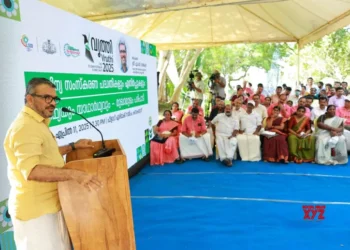The steel industry could face $518 billion in stranded asset risk as countries work towards meeting their long-term carbon neutrality commitments, if the 345.3 million tonnes per annum (mtpa) of emissions-heavy blast furnace basic oxygen furnace capacity (BF-BOF) proposed or under construction is fully developed, a new data from Global Energy Monitor’s Global Steel Plant Tracker said on Tuesday.
Much of this stranded asset risk is concentrated in Asia: 80 per cent of the BOF steelmaking capacity under development globally is planned in China (158 mtpa with up to $237 billion) and India (123 mtpa; up to $184 billion).
An additional 14 per cent of the BF-BOF steelmaking capacity under development is planned for Indonesia (24 mtpa, $35 billion), Vietnam (16 mtpa, $23 billion), and Malaysia (12 mtpa, $17 billion).
Yet progress towards decarbonising the sector by replacing BF-BOF steelmaking with the less emissions-intensive electric arc furnace pathway is stagnant.
According to the International Energy Agency’s Net-zero by 2050 scenario, the share of electric arc furnace steelmaking capacity should reach 37 per cent by 2030 and 53 per cent by 2050.
This target requires an additional 576 mtpa electric arc furnace capacity while at the same time cancelling or retiring 419 mtpa BOF capacity.
According to data in the Global Steel Plant Tracker, the shares of capacity by steelmaking technology would only shift from 69 per cent BOF and 31 per cent electric arc furnace in 2022 to 68 per cent BOF and 32 per cent electric arc furnace in 2030, and remain approximately the same through to 2050.
The report also finds that emissions estimates for steelmaking fail to account for the impact of metallurgical coal mining.
The steel industry currently emits approximately 2.6 gigatonnes of direct CO2 emissions per year and 1.1 Gt of indirect CO2 emissions from the power sector and combustion of steel off-gasses.
If the methane emissions from metallurgical coal mining are accounted for in global assessments of steelmaking emissions, the footprint of the steel industry may be as much as 27 per cent (1 Gt CO2-e20) higher than currently reported.
“Transitioning to less carbon-intensive steelmaking is a big part of countries meeting their net zero goals,” said Caitlin Swalec, Project Manager for the Global Steel Plant Tracker.
“We need to stop investing in coal-based blast furnace basic oxygen equipment and speed up the shift towards electric arc furnace steelmaking,” Swalec said.





















